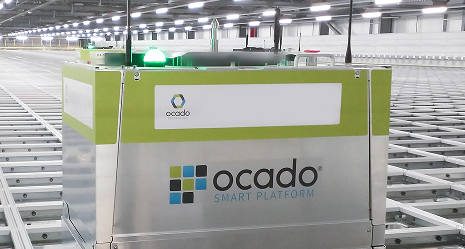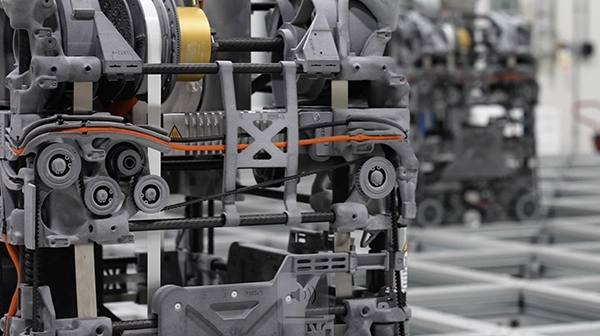How AI is redefining the customer experience in online grocery
The recent commoditisation of AI has now made it mainstream and highly accessible in some formats to consumers. But for online grocery, AI is nothing new. At Ocado Group, we’ve used AI to revolutionise the grocery ecommerce landscape. It is applied in over ninety different ways across our ecommerce, fulfilment, and logistics platform, the Ocado Smart Platform (OSP) to delight customers with highly personalised customer experiences at scale and enable our retail partners to achieve impressive economics.
In this article, we explore in depth what role AI has in redefining the customer experience for online grocery.
How AI helps customers quickly find what they love
For many, grocery shopping is a routine but essential errand to cross off a long list. A quick and frictionless path to purchase is expected by customers on every webshop. Anything that causes friction or adds unnecessary time risks losing business, as customers who get frustrated by the experience may choose to shop elsewhere next time. PwC found in their ‘Future of Shopping’ report more than 50% of consumers were willing to switch to a retailer with less friction along the user journey. On average, in ecommerce, only 3 out of 10 customers make it to the checkout to complete their order due to friction. The lingering problem is, that once a customer relationship is broken from these experiences, it’s not easy or cheap to fix.
Online shopping is undoubtedly a massive time saver. But browsing through a long list of product categories and brands can be onerous, even daunting. Where does one start? Many retailers, in grocery and beyond, are turning to AI to make their webshops a lot less laborious to use. It shortens the basket-building process by reducing the steps required to complete an order. Each customer is also provided with a unique storefront, built from their shopping habits, that caters to their needs. It ensures the products customers want or would like but don’t yet know exist are placed at the forefront of what is limited real estate — the interface of the computer or mobile phone screen. Within this space, AI provides customers with a personalised experience in a way physical stores can’t.
How does AI do this? We know from customer purchase data that over 70% of a typical order consists of previously bought products. OSP harnesses AI that uses this historical data to generate whole or partial orders for the customer. This means there is no need to fill the basket from scratch each time, saving the customer a lot of time and effort. All they have to do is click ‘purchase’ on their already completed order, and their groceries are on the way. If a customer prefers to fill their basket, AI can simplify that, allowing them to choose from a single page of regularly purchased items.
Smarter and more intuitive webshop search with AI
A recent study found that 69% of shoppers head straight to search when visiting an ecommerce site. This indicates that search is the main tool customers use to browse and purchase products. So it shouldn’t be a surprise to know we are using AI to enhance the webshop search experience. Our models are designed to improve the accuracy of matching, which massively increases the regularity of preferred brands and products appearing at the top of customers’ search results. Considering that 80% to 90% of items added to the basket come from the top 10 results, it is a crucial enhancement for retailers. The most relevant items must appear at the top of a customer’s search results to prevent lost business and abandoned baskets.
AI also makes search much more convenient. It alters a customer’s webshop search results according to changes in their shopping habits or behaviours. Another helpful AI model can suggest search terms that closely align with a customer's search history, enabling them to find what they’re looking for without needing to type a letter.
How AI inspires customers to try new products
Retailers are able to offer customers a much broader range of products online than they can find in store. But how can they leverage AI to help customers discover relevant and enticing products in a populated, busy webshop?

AI and the bandwagon effect
Influencing customers to buy products they haven’t tried before is not easy. As humans, our habitual nature is hardwired. But we also tend to adopt new choices after seeing others doing so — jumping on the bandwagon, so to speak. This is bolstered by an innate fear of missing out and the power of trends.
With that in mind, AI can recommend products to customers that they haven't tried before but have been bought by others with similar shopping habits. This capability remains a highly effective tool in persuading customers to try something new. McKinsey revealed that personalisation like product recommendations can lift revenues by 5% to 15% and fast growing retailers derive 40% more revenue from it than their slower-growing competitors.
AI-powered flash sales: expanding customers’ horizons
You may have at some point bought something from the shop you did not initially intend to buy, but were tempted by the discount sticker. Perhaps it was something you'd never considered before, but it becomes a staple after trying. The discount not only increased the size of your basket but also managed to tempt you to try something new, something that you now buy all the time.
The flash sale is a similar concept to the discount sticker. And, like the discount sticker, they do a spectacular job of persuading customers to try something they’ve never bought before. We found flash sales drove a noticeable amount of first time purchased products that also had a good chance of being repurchased in future orders.
It’s clear that flash sales are effective in encouraging customers to take a chance on untried products. But they’re even better when enhanced by AI. Retailers can actively target customers with flash sales that introduce as-yet-untried products which are suitable to their particular tastes and preferences, increasing the chance they add them to their baskets.
Improving what customers choose with AI
We've incorporated AI models that can enrich customer baskets. It does this by directing them to alternative products they didn’t know existed but could be a better fit than what they’re currently viewing on the webshop. AI is also able to show products that complement the item being viewed, helping customers build their meals more quickly and increase their spending. Cross-selling is great for the bottom line, boosting both revenue and a retailer’s average order value. These gains make a notable contribution in an industry like online grocery, where boosting traditionally narrow profit margins is an important goal.
For customers, speed and convenience are paramount. Frustration is not easily forgiven, and with fierce competition and tight margins, a needle-like focus is required to keep customers loyal and happy. As explained in this article, AI enables retailers to exceed expectations, turning grocery shopping into an expeditious and carefree experience.
This is episode one of the Ocado Group AI series. Episode 2 covers how AI is driving more efficient operations and enabling retailers to offer unmatched service to their customers.
Related content

How we use AI

Our technology

Responsible AI Framework






